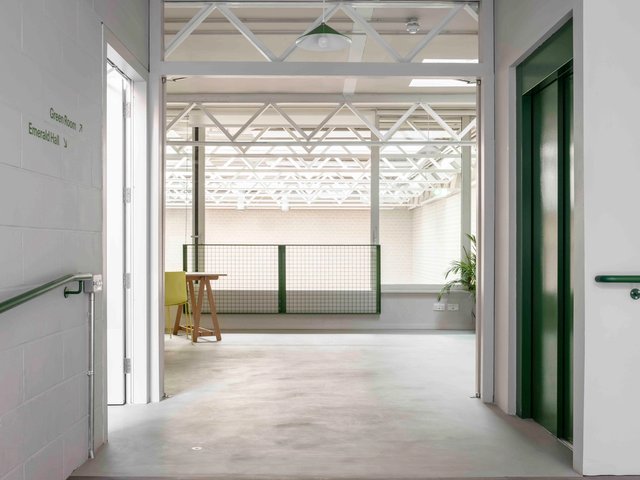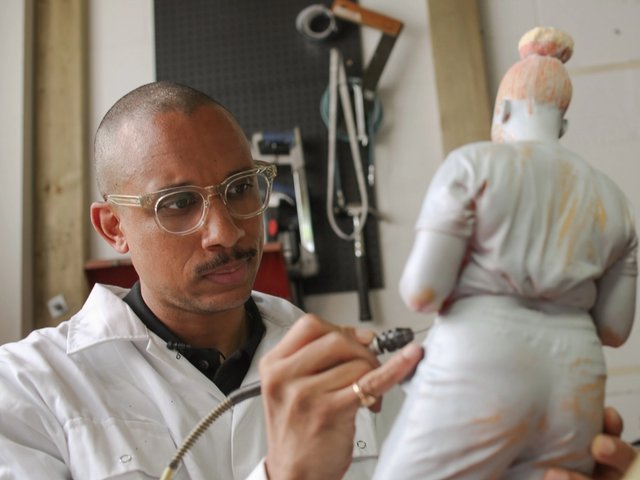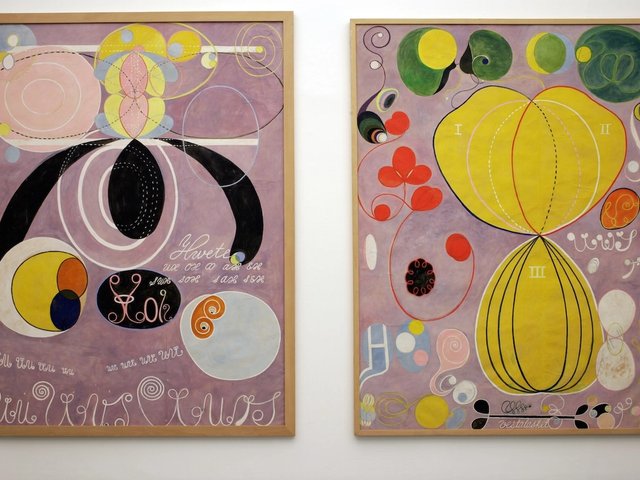Given the turmoil of 2021, it is especially remarkable that a number of significant permanent public artworks were realised in London by the end of last year, and whatever doom and gloom this new year might hold, there are more on the runway for 2022.
Chief among these are those that are part of the new community centre Holborn House, which recently opened in Bloomsbury. Originally an old basement gymnasium, the space has been redesigned by 6a Architects, a practice much loved by the UK art world with projects including the award-winning MK Gallery in Milton Keynes, and South London Gallery’s Fire Station annexe. Commissioned to provide the Holborn community with an activities space for adults and children, 6a has joined forces with the artist Caragh Thuring, who was involved in every aspect of the building’s construction, from the façade to the toilet tiling.
The artist Caragh Thuring was involved in every aspect of the building, from the façade to the toilet tiling
Thuring is best known as a painter, but for Holborn House she has created an integrated, multi-stranded scheme that permeates every part of the building in what is her first permanent public artwork. The most conspicuous element of her scheme is Great Things Lie Ahead (2020), an etched glass work that covers the building’s entire façade in a series of large glazed panels to expose its steel structure and interior spaces. Both functional and adorning, this transparent membrane has been etched with the outlines of bricks and mortar taken from the surrounding buildings, some of which date back to the 18th century.
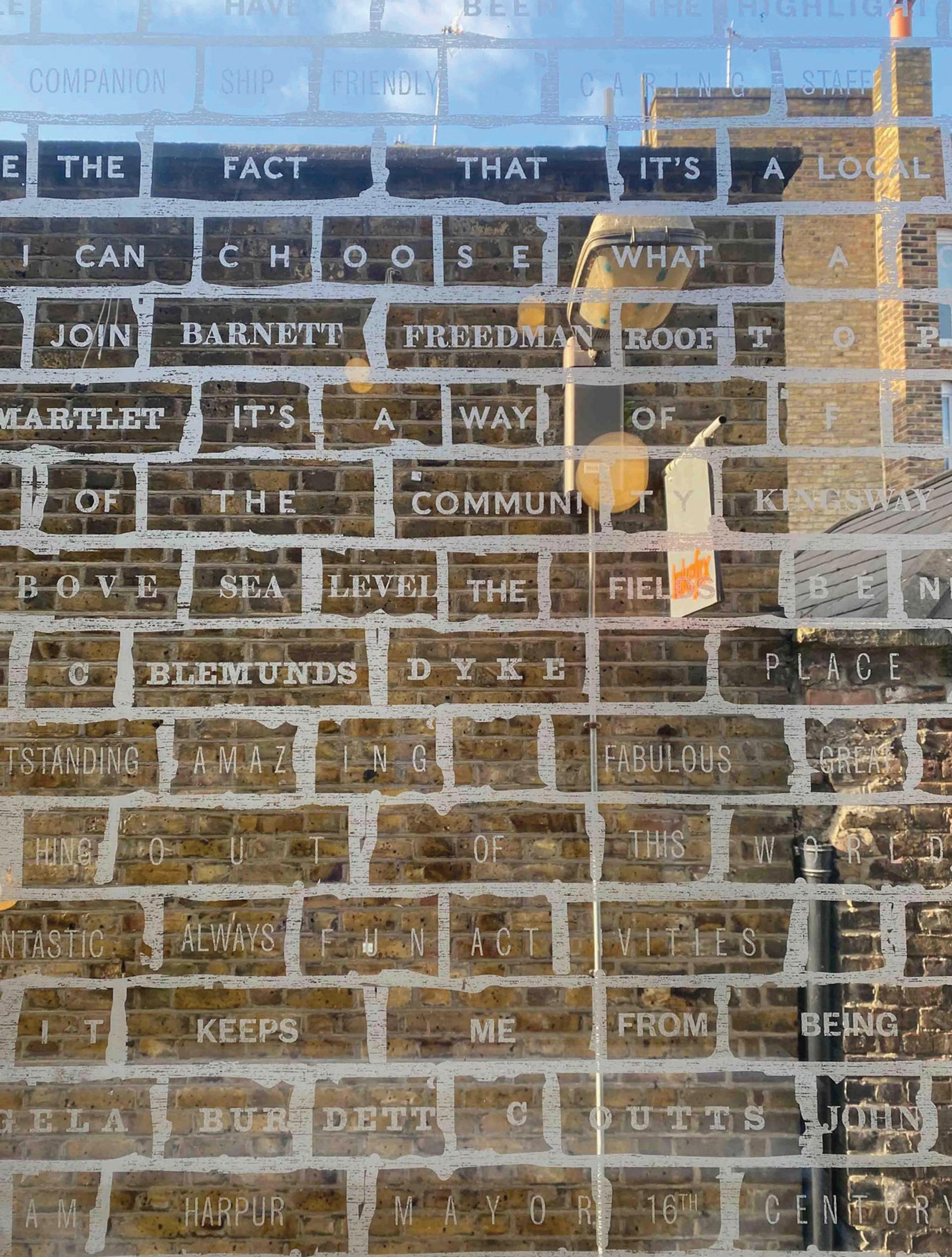
Caragh Thuring’s Great Things Lie Ahead (2020), installed at Holburn House in Bloomsbury © The artist
Inscribed into this ghostly brickwork tracery are words that allude to multiple histories of the site, its surroundings and its communities past and present. There are phrases, personal testimonies, names of places as well as individuals—famous and lesser-known—gleaned from extensive research as well as from workshops and interviews with local people and the Holburn Community Association, which runs the venue. Thuring’s work also features on the acoustic panelling in the upper storey of the gymnasium where her brick motif appears as a fabric frieze echoing the textile elements she incorporates into her paintings. The tiles in the kitchen, shower rooms and toilets also reflect her distinctive off-kilter palette, offset by vivid green metalwork and stair rails that nod to Holborn’s distant past as a favoured forested hunting ground for the Mayor of London in the 16th century.
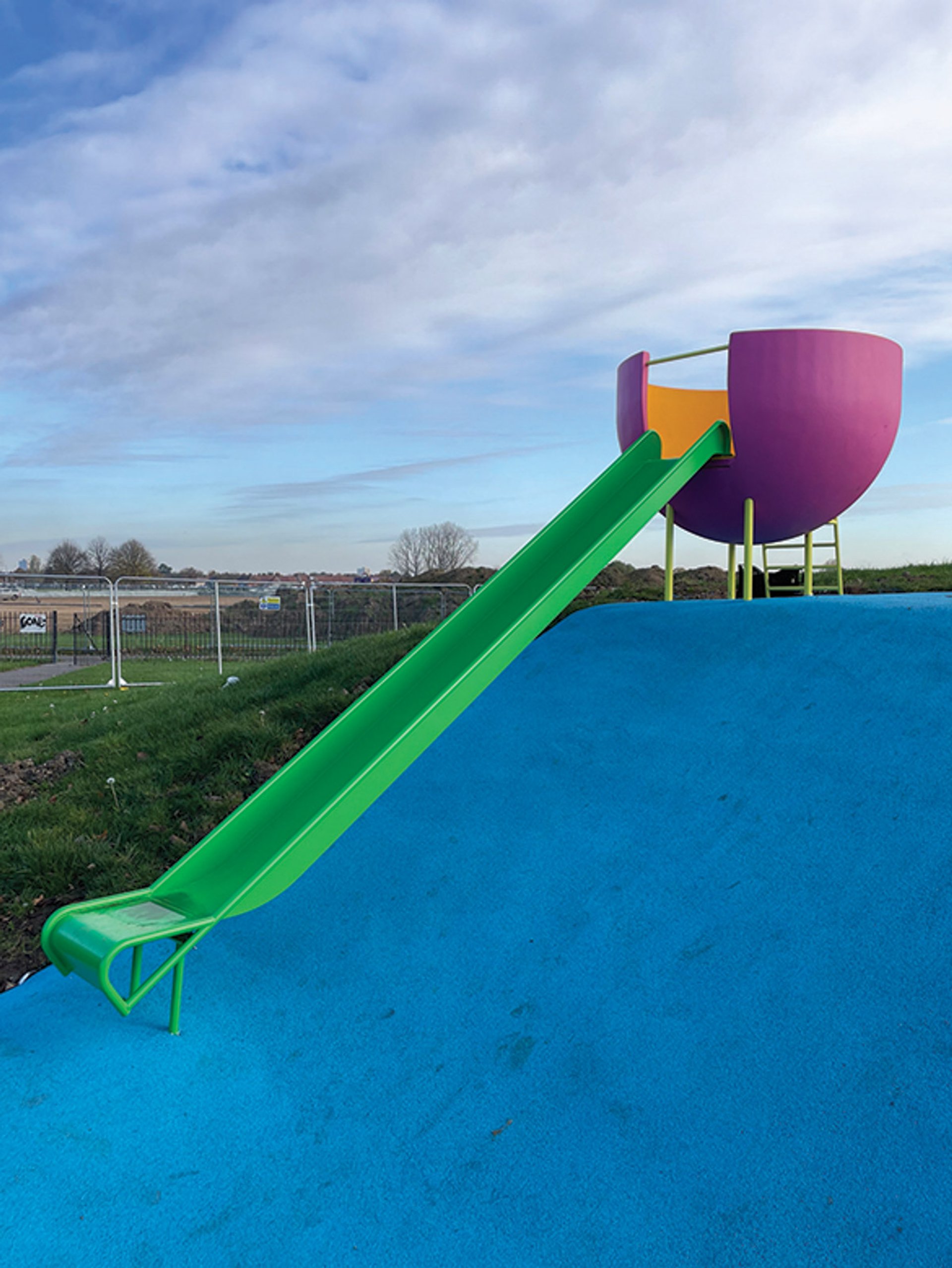
A slide in Yinka Ilori’s The Flamboyance of Flamingos playground Photos and design: the artist
More recent histories have fed into artist-designer Yinka Ilori’s refurbishment of an out-of-use play area in Parsloes Park on the Becontree Estate in Dagenham, East London, once the largest social housing in Europe, which celebrated its centenary last year. For The Flamboyance of Flamingos, his vividly coloured new playground scheme, which opened in November, Ilori recalls Parsloes’s 1930s heyday as a vibrant People’s Park with formal gardens, pavilions and an ornamental lake, complete with a population of flamingos. Now the birds have returned in the form of bouncy spring rockers set within a rich colourscape incorporating new play equipment as well as a basketball court, with the avian theme carried through into lofty play structures designed as bird watching towers and a nest-like slide.
Individual and community memory lie at the core of another crucial public commission made by Hackney Council in East London to honour and celebrate the Windrush generation, the people who arrived in Britain from Caribbean countries between 1948 and 1973. Two sculptural works by Veronica Ryan and Thomas Price are the UK’s first permanent public sculptures to pay tribute to the contribution of the thousands of Caribbean men and women who came to Britain in the hope of a better life. Veronica Ryan’s large marble-and-bronze sculptures of Caribbean fruit and vegetables—a custard apple, a breadfruit and a soursop—based on her memories of visiting Hackney’s Ridley Road Market with her mother, are already installed on the area’s Narrow Way Square, where they have immediately become a much loved local landmark.
Then in June, a work by Price—two 9ft-tall bronze figures of a man and a woman—will be installed outside Hackney Town Hall. They do not portray specific individuals, but are a composite depiction based on photo archives, observations and digital 3D scans of Hackney residents, many made following a callout to the Windrush community and their descendants last year. Price’s larger-than-life physical representation of people from the African-Caribbean diaspora will not only offer a powerful salute to the legacy and cultural influence of the Windrush generation but also will stand as a stark reminder of the dire lack of statues representing Black citizens throughout the UK. Let’s hope the coming year marks the unveiling of more works in all forms that will continue to address this glaring discrepancy.




